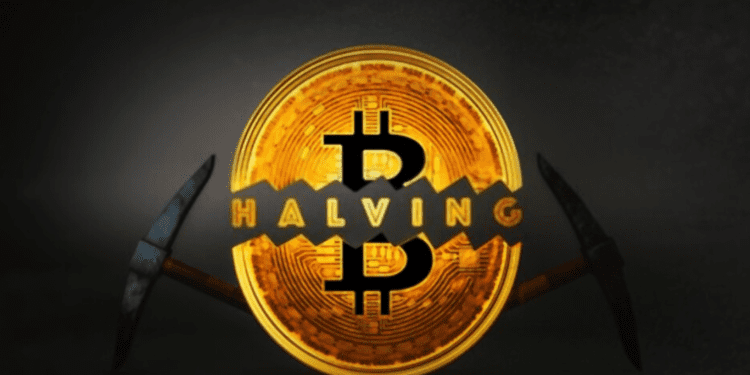Countdown statistics based on an average block creation time of around 10 minutes show over 60% progress towards the next Bitcoin block reward halving. Most halving countdown clocks use a 10-minute moving average, whereas the countdown uses about seven most recent block intervals. Sixty-five minutes indicates a potential halving in 2023.
Faster Block Intervals Suggest Bitcoin Halving Could Happen in 2023
On October 5, 2022, a block height of 757,214 was mined. Bitcoin’s total hash rate reached an all-time high (ATH) of 321.15 exahash per second (EH/s). Block intervals have been faster than usual, well, below the 10-minute average.
The rate at which 2,016 blocks are found between difficulty adjustments determines the difficulty. The current block spacing suggests a significant increase in difficulty is imminent. Ahead of the next difficulty increase, the hash rate remains strong. It has a block time of around seven at the time of writing.
The next mining difficulty retargeting will be implemented around October 10, 2022. The protocol’s block rewards may be halved in 2023 If block times remain faster than expected after retargeting. According to bitcoinsensus.com stats, halving could occur around December 19, 2023, at 7:00: 65 minutes per block interval.
Bitcoinsensus.com shows the halving based on the 10-minute average rule. This indicates that the halving will occur on May 1, 2024. Countdown calculators apply a 10-minute average rule. Other data points suggest the halving could occur on April 20, 2024.
Progress to the next halving is still over 60% complete. If this occurs, the post-halving Bitcoin miner reward will be reduced from 6.25 BTC to 3.125 BTC. Despite being fast, miners may slow down slightly if the difficulty rises significantly on October 10 and the BTC price stays low.
This will push the halving back into the 2024 range. It leaves more than a year’s worth of BTC block still to come. According to Blocksbridge Consulting’s recent blog post, the change in difficulty and lower price points could give bitcoin miners the headache of losing profits.
The daily bitcoin mining revenue per PH/s is about $80. If the difficulty increases by 13% on Monday and the price of bitcoin stays at $19.5k, the daily turnover ( petahash) drops to $70 per second. It will be mined daily by miners with unprecedented income, even lower than the post-May 2020 halving.
According to the blog:
“Unless bitcoin’s price breaks the $20,000 barrier, those who employ older-generation machines or have bloated mining operations will face an even tougher time ahead”.
Viabtc’s Viawallet halving metric shows that eight blockchains are expected to see reward halving. This is the so-called “reward cut.” Dash expects the premium to drop on June 20, 2023, as it shrinks from his DASH 2.76 to DASH 2.56. Other redemption events and reward halvings originate from blockchains, including BCH, BSV, LTC, ETC, ZEC, and ZEN.
What Happens to Bitcoin After All 21 Million Are Mined
In August 2022, there were 19,124,681 Bitcoins. At this point, 1,875,319 Bitcoins must be mined before reaching the 21 million Bitcoin limit. One of the key features of Bitcoin is the limited supply of the coin. Bitcoin inventor Satoshi Nakamoto designed the cryptocurrency as digital gold. He used bits to mimic the finite amount of physical gold.














